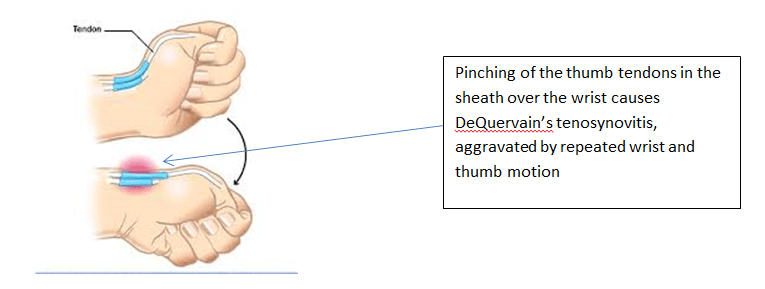Causes of DeQuervain’s Tenosynovitis
Most cases of DeQuervain’s result from chronic overuse of the wrist, especially in jobs that require repeated use of the hand and wrist. Incidence peaks in patients between the ages of 30 and 50. The condition is more common in women than in men. Infant care involving using both thumbs as leverage to lift the child is also commonly related with the condition.
Other causes can be a direct injury to your wrist resulting in scar tissue that restricts movement of the tendons. Inflammatory arthritis, such as rheumatoid arthritis can also result in the condition.
Treatment
Treatment involves resolving the swelling around the tendon sheaths in this condition. It is generally successful if treated early . This can involve anti-inflammatory medication and resting the wrist and thumb in a splint for 4 to 6 weeks in early cases.
If the situation is more advanced, a single injection of corticosteroids into the thumb tendon sheaths will relieve the pain. When given for a patient with less than 6 months of symptoms, it is generally successful in healing the problem.
Recurrent cases should be treated with surgical decompression of the tendon sheath. This is done as an outpatient surgery and involves opening the tendon sheath to relieve the pinching of the tendons and restore smooth tendon gliding. It will cure the problem.



